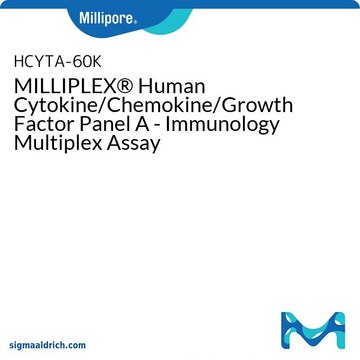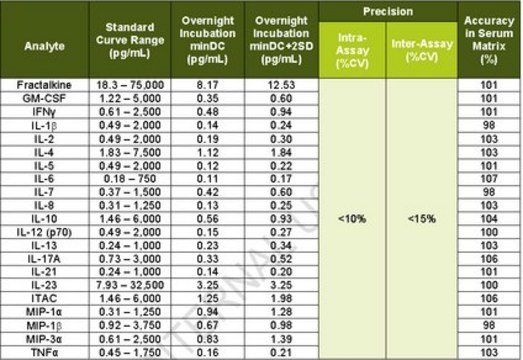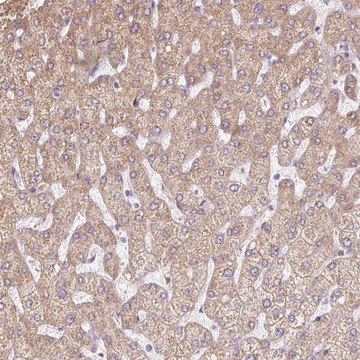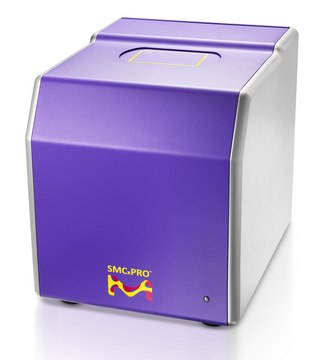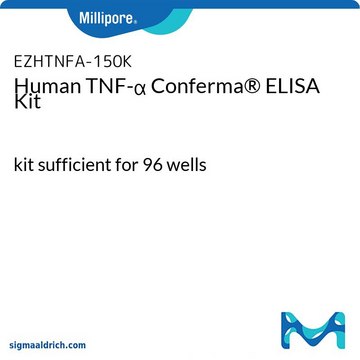03-0176-00
SMC® Human IL-10 High Sensitivity Immunoassay Kit
Select a Size
Select a Size
About This Item
Recommended Products
description
LLOQ range: 0.1-0.2 pg/mL, refer to CoA forlot-specific LLOQ
species reactivity
rat, mouse, feline, canine, nonhuman primates
manufacturer/tradename
SMC®
technique(s)
single molecule counting: suitable
assay range
inter-assay cv: <20%
intra-assay cv: <15%
(Intra-assay n=20; Inter-assay n=5)
storage temp.
2-8°C
1 of 4
This Item | 03016100 | 03016000 | 03016700 |
|---|---|---|---|
| technique(s) single molecule counting: suitable | technique(s) ELISA: suitable, single molecule counting: suitable | technique(s) ELISA: suitable, single molecule counting: suitable | technique(s) ELISA: suitable, single molecule counting: suitable |
| species reactivity rat, mouse, feline, canine, nonhuman primates | species reactivity human | species reactivity human | species reactivity human |
| manufacturer/tradename SMC® | manufacturer/tradename SMC® | manufacturer/tradename SMC® | manufacturer/tradename SMC® |
| assay range sensitivity: 0.10 pg/mL | assay range sensitivity: 0.04 pg/mL | assay range sensitivity: 0.20 pg/mL | assay range sensitivity: 0.12 pg/mL |
| storage temp. 2-8°C | storage temp. 2-8°C | storage temp. 2-8°C | storage temp. 2-8°C |
General description
Assay protocols are similar to existing sandwich ELISA methods with two key differences:
1) Elution buffer disrupts the sandwich, separating the labeled detection antibody for quantification.
2) The Erenna and SMCxPRO® immunoassay systems detect analytes using Single Molecule Counting (SMC®) technology.
Specificity
Although IL-10 was detectable in non-human primate, mouse, rat, canine, and feline plasma, the assay has not been validated for these species.
Accuracy:
- Minimum of 5 serum samples spiked with average recovery of 87% with a range of 84-93%
- Minimum of 5 plasma samples spiked with average recovery of 90% with a range of 82-97%
Application
Packaging
Components
- Assay Buffer
- IL-10 Coated Beads
- Standard Diluent
- IL-10 Detection Antibody
- IL-10 Standard
- 10X Wash Buffer
- Buffer D
- Elution Buffer B
Legal Information
Disclaimer
Signal Word
Danger
Hazard Statements
Precautionary Statements
Hazard Classifications
Acute Tox. 3 Dermal - Acute Tox. 4 Inhalation - Acute Tox. 4 Oral - Aquatic Chronic 3 - Eye Irrit. 2 - Repr. 1B
Storage Class Code
6.1C - Combustible acute toxic Cat.3 / toxic compounds or compounds which causing chronic effects
Regulatory Information
Certificates of Analysis (COA)
Search for Certificates of Analysis (COA) by entering the products Lot/Batch Number. Lot and Batch Numbers can be found on a product’s label following the words ‘Lot’ or ‘Batch’.
Already Own This Product?
Find documentation for the products that you have recently purchased in the Document Library.
Related Content
Use the power of high sensitivity immunology assays with SMC® technology to precisely characterize low-abundant cytokines like those from Th1/Th2 and Th17 cells.
Our team of scientists has experience in all areas of research including Life Science, Material Science, Chemical Synthesis, Chromatography, Analytical and many others.
Contact Technical Service
